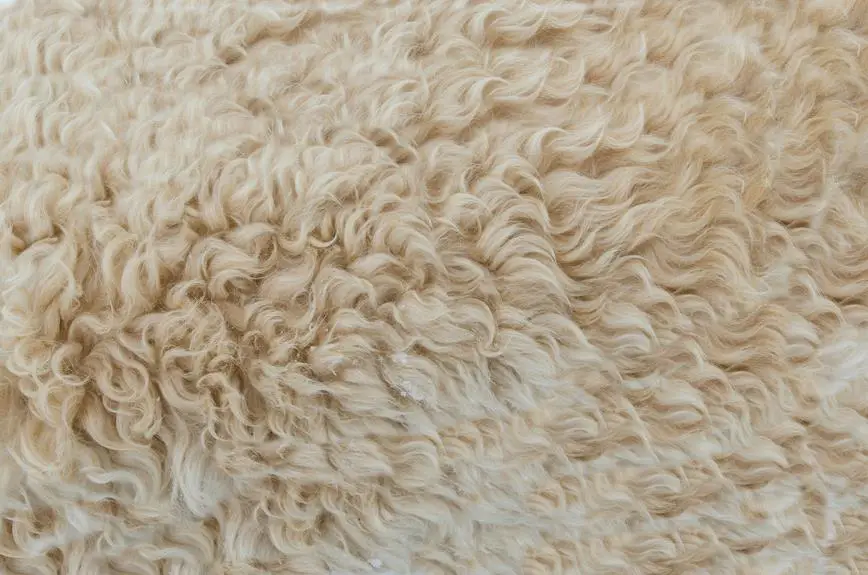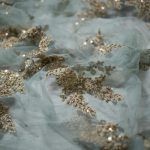When you're choosing between gossamer and tulle for your project, you might wonder just how light each fabric truly is. Gossamer, known for its ethereal quality, often feels weightless, especially when compared to tulle's more structured form. Although both are considered lightweight, the ways they behave in design can be quite different. Curious about how these textures might affect your final look? The nuances in fabric choice can significantly influence not just aesthetics, but also the overall vibe of your creation. Let's explore what sets them apart.
Table of Contents
Understanding Gossamer Fabric
Gossamer fabric is a lightweight, sheer material that often adds an ethereal touch to garments and decorations. You'll find it commonly used in various applications, from wedding dresses to delicate curtains, creating a dreamy and romantic feel. This fabric is typically made from silk or nylon, giving it a soft, smooth texture that drapes beautifully.
When you handle gossamer, you may notice how easily it flows and moves, making it perfect for layering. You can pair it with other fabrics to enhance its whimsical qualities, and its transparency allows colors and patterns beneath to subtly show through. This quality can elevate simple designs into something breathtaking.
If you're considering gossamer for your next project, keep in mind that it can be delicate. You'll want to treat it with care to avoid snagging or tearing.
Additionally, while it's great for formal events or decorations, its appropriateness may depend on the overall aesthetic of your project. Overall, gossamer fabric is versatile and enchanting, serving as an excellent choice for those looking to achieve a light and airy effect.
Characteristics of Tulle
Tulle is a fine, lightweight netting that's often used in bridal wear, formal gowns, and decorations due to its enchanting, fluffy texture. This fabric comes in a variety of colors and can easily transform any outfit into something magical.
You'll love how versatile tulle is, making it perfect for adding layers of dimension and elegance.
Here are three standout characteristics of tulle that you'll appreciate:
- Breathability: Tulle allows air to flow freely, making it comfortable to wear, even in warmer conditions. You won't feel weighed down by heavy fabric.
- Versatility: Whether you're crafting a whimsical veil or decorating for a special occasion, tulle can adapt to meet your needs. Its sheer quality makes it ideal for layering or using as an accent.
- Graceful Draping: Tulle cascades beautifully, giving garments an ethereal quality. You'll find that it enhances shapes and movements, creating a stunning visual effect that captivates onlookers.
With its unique properties, tulle effortlessly elevates any creation, ensuring you'll stand out with elegance at your next event.
Weight Comparison of Gossamer and Tulle
When comparing the weight of gossamer and tulle, it's essential to consider their material compositions.
Gossamer is often lighter and airier, making it a great choice for delicate applications.
On the other hand, tulle can vary significantly in weight depending on its density, which influences how you might use it in your projects.
Material Composition Differences
The weight of gossamer is typically lighter than tulle, making it a preferred choice for delicate fabric applications.
Gossamer is often crafted from natural fibers such as silk or fine cotton, contributing to its ethereal quality. On the other hand, tulle is usually made from nylon or polyester, giving it a slightly heavier feel.
While both materials serve various design needs, their compositions significantly impact their weight and drape.
When you consider which fabric suits your project, think about these emotional elements:
- Dreaminess: Gossamer's lightness can evoke an airy, whimsical feel, perfect for romantic settings.
- Versatility: Tulle's sturdiness offers durability, making it suitable for more practical uses while still delivering charm.
- Elegance: The radiant finish of gossamer adds an air of sophistication that tulle sometimes can't match.
These aspects make it essential to choose the right material based on your desired outcome.
Whether you're reaching for the soft, floating nature of gossamer or the structured elegance of tulle, understanding their material differences lets you create something beautiful.
Practical Applications of Each
Choosing between gossamer and tulle often boils down to their weight and how it affects their practical applications in fashion and design. Gossamer, being lighter and more sheer, is perfect for creating ethereal overlays and delicate accent details. You'll often see it in haute couture gowns, as it adds a dreamy quality without adding bulk. On the other hand, tulle, with a bit more structure, is your go-to for tutus and voluminous skirts.
Here's a quick comparison to help you decide:
| Gossamer | Tulle | |
|---|---|---|
| Weight | Extremely lightweight | Light but firm |
| Structure | Very soft & flowy | Holds shape well |
| Best Use | Ethereal overlays | Structured garments |
In practical terms, gossamer's lightness allows it to float gracefully in the wind, making it ideal for veils and whimsical decorations. Tulle's weight makes it suitable for shaping skirts, giving you that iconic puff. Depending on your project's needs, you can choose the material that enhances your design without compromising on comfort or aesthetics.
Breathability of Each Fabric
Gossamer offers superior breathability compared to tulle, making it a popular choice for those seeking comfort in warm weather.
Its lightweight nature allows for excellent airflow, keeping you feeling cool and comfortable during hot days. Tulle, while delicate and lovely, tends to trap heat more easily, which could lead to discomfort if you're outdoors for extended periods.
Here are three reasons why gossamer might be your go-to fabric for breathability:
- Cooling Effect: Gossamer allows air to circulate freely, preventing that sticky, sweaty feeling that can happen with heavier fabrics.
- Lightweight Layers: You can easily layer gossamer without adding bulk, making it perfect for those warm summer evenings.
- Comfort in Motion: When you move around, gossamer drapes and flows beautifully, providing you with ease and comfort, unlike heavier tulle which can cling and feel restrictive.
Choosing the right fabric can make all the difference. With gossamer's breathability, you're not just wearing a fabric; you're embracing comfort and style that'll keep you feeling great all day long.
Uses in Fashion and Design
When you think of evening wear, gossamer's lightness can elevate your look, making you feel ethereal.
On the other hand, tulle shines in bridal gowns, adding that romantic flair every bride desires.
Exploring layering techniques with these fabrics can really transform your designs and showcase your creativity.
Gossamer in Evening Wear
In evening wear, gossamer adds an ethereal quality that elevates any design, creating a blend of sophistication and allure. You'll find that its lightweight, airy nature lets garments drape beautifully, enhancing the elegance of any silhouette.
Whether you're attending a gala or a formal reception, gossamer wraps you in a delicate charm that turns heads.
Here are three ways gossamer shines in evening wear:
- Layering Magic: Use gossamer to create stunning layered looks. Its transparency lets you mix colors and textures, crafting multi-dimensional outfits that mesmerize.
- Flowing Movement: As you walk, gossamer gracefully sways with you, capturing light and drawing attention, adding instant grace to your every step.
- Intricate Detailing: Designers often incorporate intricate gossamer details, like ruffles or appliqués, giving a romantic touch that feels both fresh and timeless.
Ultimately, gossamer's versatility makes it an essential fabric for creating unforgettable evening wear. It invites you to express your unique style while embodying an enchanting elegance that leaves a lasting impression.
Tulle for Bridal Gowns
Tulle is a favorite choice for bridal gowns, offering a romantic and dreamy aesthetic that perfectly complements the special occasion. This lightweight fabric features a delicate, sheer quality that can create stunning layers and unique silhouettes. When you step into a gown adorned with tulle, you instantly elevate your bridal look.
One of the best aspects of tulle is its versatility. It works beautifully for both traditional and modern designs, allowing you to customize your gown according to your personal style. You can choose tulle skirts for a fairy-tale look or opt for intricate tulle overlays to enhance lace details. Either way, tulle adds an enchanting touch to any bridal ensemble.
Additionally, tulle comes in various colors and textures, making it easy to incorporate into your wedding palette. Whether you prefer classic ivory, blush pink, or a bold statement color, tulle can adapt to fit your vision.
Layering Techniques in Fashion
Layering techniques play a crucial role in fashion and design, allowing you to create depth, texture, and visual interest in your outfits. Whether you're aiming for a casual look or an elegant ensemble, mastering layering can elevate your style to new heights.
Here are three exciting reasons to embrace layering:
- Versatility: You can mix and match various textures and colors to fit different occasions, making your wardrobe feel limitless.
- Comfort: Layering lets you adapt to changing temperatures. You'll stay warm when it's cool and can easily shed layers when the sun comes out.
- Personal Expression: Each layer offers a chance to show off your personality. Whether you prefer bold patterns or subtle hues, layering helps you tell your unique fashion story.
Care and Maintenance Tips
Maintaining the delicate beauty of gossamer and tulle requires gentle handling and regular care.
Start by storing these fabrics properly; avoid cramming them into tight spaces. Instead, opt for hanging them or laying them flat in a breathable fabric bag.
When it comes to cleaning, always check the care label first. For most gossamer and tulle options, hand washing in cold water with a mild detergent is best. Avoid wringing or twisting the fabric, as this can damage the fibers. After washing, rinse thoroughly and let them air dry flat, away from direct sunlight to prevent any fading or discoloration.
If you've got any creases, it's crucial to approach ironing with caution. Use a low heat setting and place a thin cloth between the iron and the fabric. This helps prevent burning or damaging the delicate fibers.
Lastly, avoid exposing gossamer and tulle to harsh chemicals or strong scents, as these can degrade the material over time. By giving your gossamer and tulle the care they deserve, you'll ensure their elegance lasts for many occasions to come.
Choosing the Right Fabric
When it comes to choosing between gossamer and tulle, consider the occasion and the look you want to achieve. Gossamer is your go-to if you're aiming for an ethereal, delicate feel. It drapes effortlessly and is perfect for lightweight overlays in romantic settings.
On the other hand, if you're after structure and volume, tulle shines bright.
Here are three points to help you decide:
- Event Type: For a whimsical wedding or dreamy party, gossamer adds softness that captivates. Tulle, however, brings flair to bridal gowns and dance costumes with its body and texture.
- Color Variety: Gossamer usually comes in soft pastels, aligning with light, airy themes. Tulle, versatile in hues, helps make bold statements.
- Layering Potential: Need dimension? Gossamer easily layers without bulk, while tulle provides that necessary puff that speaks of extravagance.
Ultimately, weigh these factors based on your vision. Trust your instincts—whether floating like a cloud in gossamer or making a statement in tulle, your choice will certainly shine.
Frequently Asked Questions
Can Gossamer and Tulle Be Combined in Designs?
Yes, you can definitely combine gossamer and tulle in your designs. Their different textures and weights create beautiful layering effects, enhancing the overall aesthetic. Experiment with various combinations to achieve the look you desire.
What Colors Are Gossamer and Tulle Available In?
Gossamer and tulle come in a wide range of colors. You'll find soft pastels, vibrant brights, and classic neutrals, allowing you to choose the perfect shade to complement your design projects or styles effortlessly.
Are Gossamer and Tulle Eco-Friendly Fabrics?
Gossamer and tulle can vary in their eco-friendliness. If you're looking for sustainable options, check the materials' origins and manufacturing processes. Some brands offer eco-conscious versions, helping you make a greener choice.
How Do Gossamer and Tulle Differ in Texture?
Gossamer feels delicate and soft, almost ethereal against your skin, while tulle has a stiffer, more structured texture. You'll notice that gossamer drapes beautifully, whereas tulle creates more volume and definition in designs.
Which Fabric Is More Affordable, Gossamer or Tulle?
When you're comparing fabric affordability, tulle usually comes out cheaper than gossamer. You'll find tulle in a wide range of prices, making it easier for you to stay within budget for your project.
- The Use of Nonwovens in Construction and Civil Engineering - July 11, 2025
- The Use of Nonwovens in Construction and Civil Engineering - July 11, 2025
- The Use of Nonwovens in Construction and Civil Engineering - July 11, 2025







